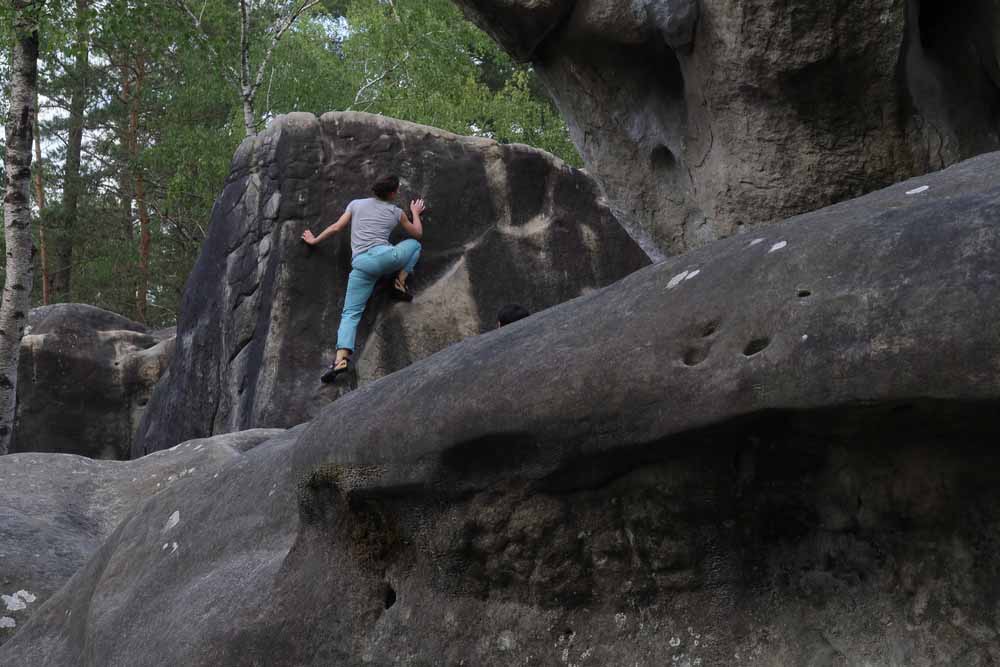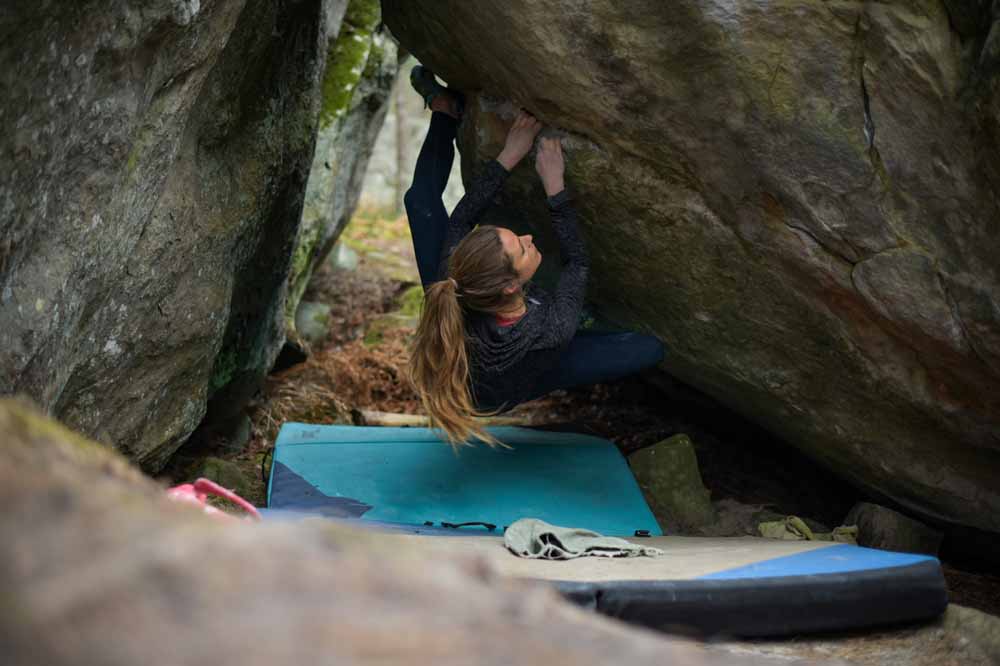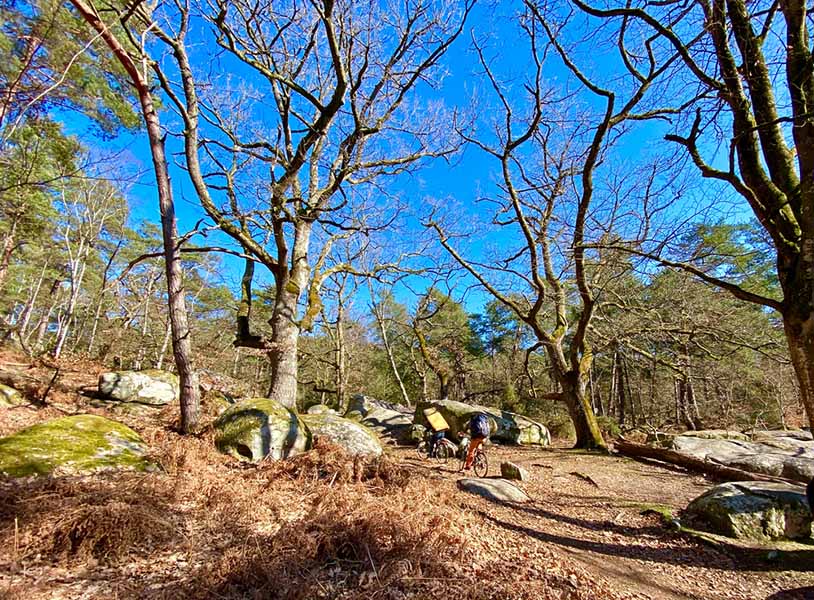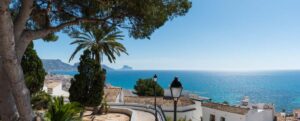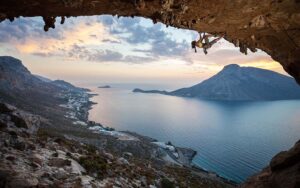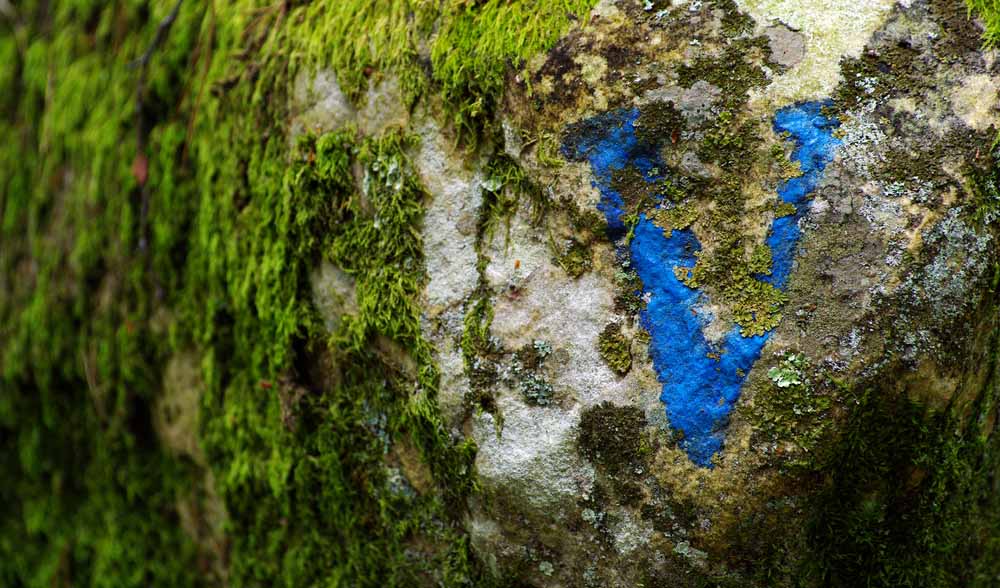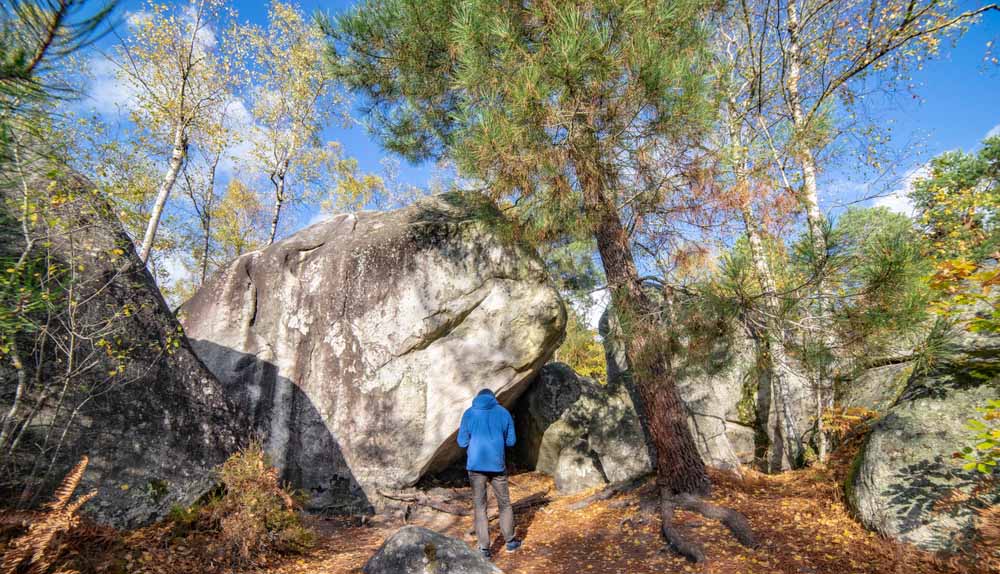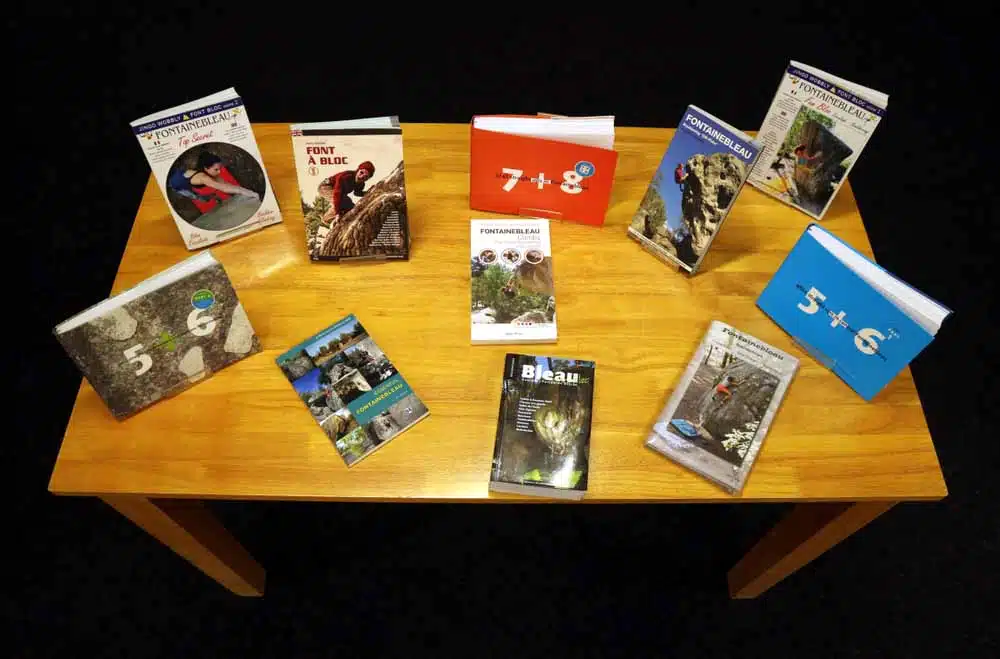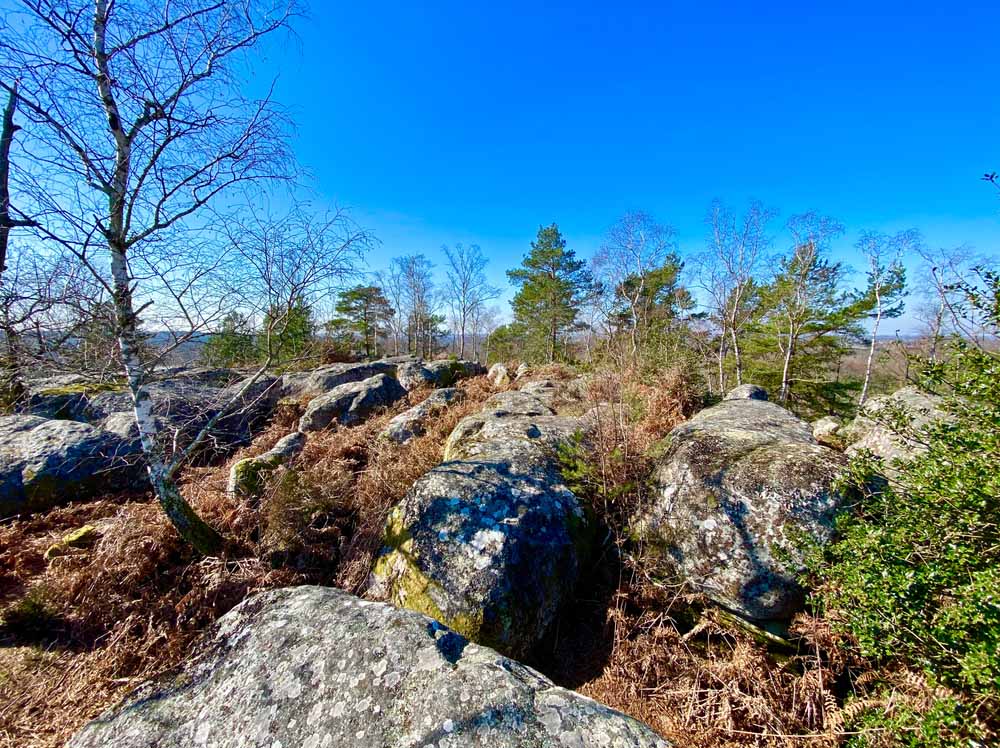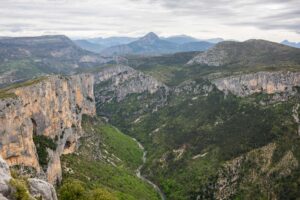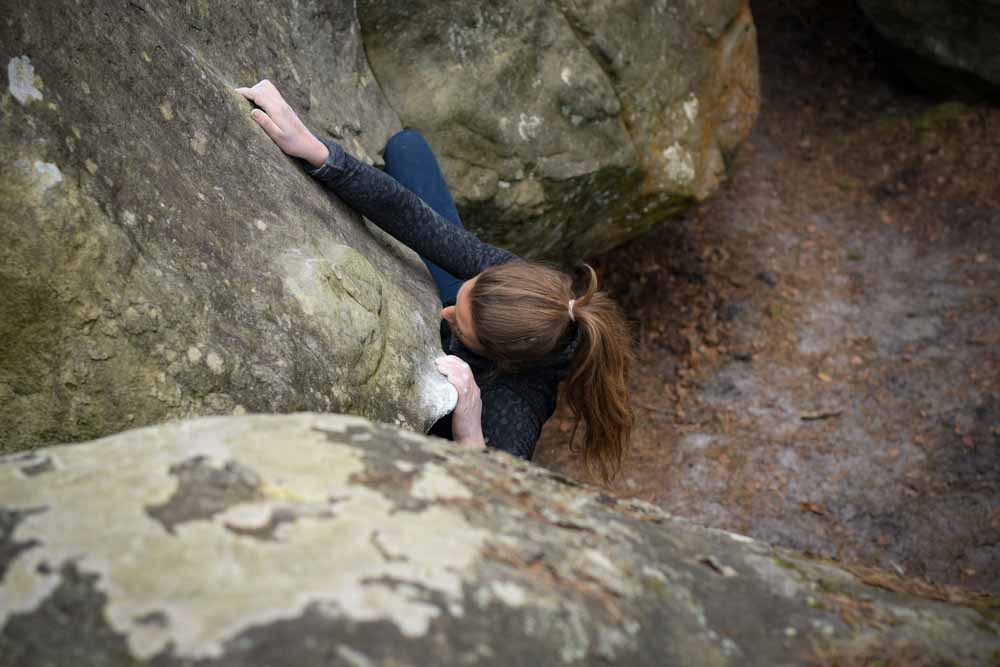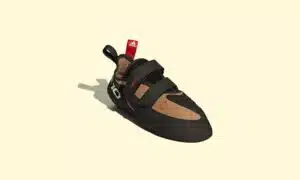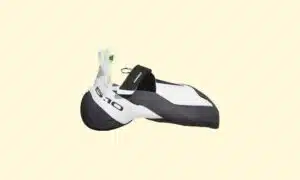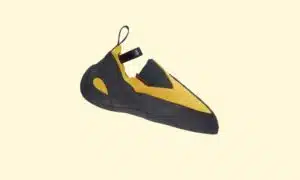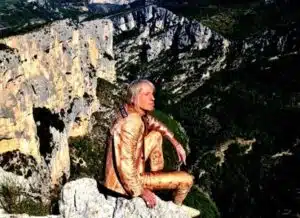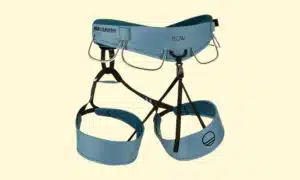If you’ve been a climber for any amount of time, you’ve probably heard of Fontainebleau. For many, especially boulderers from Europe, climbing in Fontainebleau is the pinnacle– impeccable rock, a beautiful natural setting, and a thriving climbing community and culture.
But fortunately, the world-class bouldering in Fontainebleau is not out of reach for those who want to travel. Over the years, Fontainebleau has become a world-renowned and international climbing destination for any climber coming anywhere on planet Earth. Even you!
Keep reading for our take on France’s most iconic bouldering hotspot– the forests of Fontainebleau.
A Brief Overview of Climbing in Fontainebleau
Fontainebleau, also referred to as Font or the Forest, is conveniently located just one hour southeast of the capital city of Paris. Font is widely regarded as one of the best bouldering zones in France, but according to some, it’s the best in the world.
Unbeknownst to most climbers, Font is not just a single area. The climbing in Fontainebleau is spread over multiple different forests, like Foret Domaniale de Fontainebleau, Foret Domnaniale des Trois Pignons, and Foret de la Commanderie-Larchant, to name a few.
These forests are home to thousands of sandstone boulders, offering well over 20,000 boulder problems dispersed between 136 crags. Many of these are located within the UNESCO Réserve de Biosphere de Fontainebleau et du Gåtinais.
Fontainebleau’s Climbing History
Some of the earliest climbing ascents of the boulders around Fontainebleau were documented in the 1870s. At the time, the Club Alpin Francais from Paris began exploring the climbing potential in the Forest as a way to stay fit for future alpine climbing expeditions.
Later, in the 1930s, a legendary French climber named Pierre Allain began frequenting the forest and putting up first ascents. Around the same time, Allain also invented a new style of soft-soled climbing shoes that helped climbers achieve greater climbing feats.
In the 1950s, after the Second World War, climbers returned to Font. Two groups in particular, the Cuvier Academic Club and the Club Olympique de Billancourt, dominated the climbing in the Forest.
Despite the work of Bleausard climbers, the climbing in Font remained relatively under the radar throughout the 1960s and 1970s. That is until the 1980s.
The ‘80s proved to be a turning point in Fontainebleau, like in many other parts of the world, such as Smith Rock in the United States and the Frankenjura in Germany, where a new generation of climbers with intense motivation and training ethic converged on the Forest to establish new, innovative first ascents and propel the climbing culture in Fontainebleau to where it is today.
Getting to Font
Due to its proximity to Paris, getting to Fontainebleau is relatively simple.
Most local climbers rely on Europe’s well-developed train system and rental car agencies to access Font. For example, UK climbers use the Euro Tunnel to get to France.
For climbers traveling internationally, the best airport to fly into is Paris-Orly. From there, you are only about one hour or 60-70 kilometers (depending on your exact route) from the town of Fontainebleau.
Other than the Paris-Orly airport, your next best option would be Charles de Gaulle Airport, but that lands you slightly further away from your final destination in Font.
Bouldering in Fontainebleau
The climbing in Fontainebleau occurs on sandstone boulders strewn about a beautiful forest. There are boulder problems to suit every type of rock climber, from steep overhangs to delicate slabs and everything in between.
However, the climbing in Font is primarily characterized by slopers, micro crimps, heady top-outs, and powerful movements. Fortunately, the landing zones around the boulders are world-class– nice and flat and wide open (and definitely really sandy).
The Ideal Climbing Season
Climbing year-round in Font is possible. However, certain times of the year are better than others.
For example, the summers in Font can be beautiful and warm. However, the warm temps may detract from the friction you need on Font’s slopers. On the opposite side of the spectrum, Winter in Font offers cold temps that improve friction, but obviously, you run the risk of rain and snow.
That’s why Spring and Fall tend to be the ideal times of the year for bouldering in the forest. Typically, the shoulder seasons have a nice mixture of cool temperatures and dry weather.
For example, September-October and April-May are the prime times. But be wanted– Font is always packed around the Easter holiday.
The Font Circuits
In 1947, Fred Bernik designed the first Fontainebleau bouldering circuits. Later on, in the 1980s, the bouldering circuits in Font were standardized by color and difficulty.
The standardized circuits are based on an adjectival system of grading. This system grades the overall difficulty and danger of the route. For example, an easier route with one hard move is graded lower than one with sustained hard moves from start to finish.
This differs from a numerical system of grading which I will explain next.
| The Adjectival Grading System in Font | |||
| Color | Abbreviation | Adjective | Translation |
| Yellow | PD | Peu difficile | Slightly difficult |
| Orange | AD | Assez difficile | Fairly difficult |
| Blue | D | Difficile | Difficult |
| Red | TD | Tres difficile | Very difficult |
| Black | ED | Extremement difficile | Extremely difficult |
| White | ED+ | Extremement difficile superieur | Even more extremely difficult |
Nowadays, you can enjoy the boulders in Font by picking a color that suits your ability level and climbing style without getting caught up by actual numbers.
But of course, if you prefer the more traditional way of grading a boulder based on the difficulty of its hardest single move or sequence of moves, Fontainebleau has a numerical grading system for that, also.
The Fontainebleau Climbing Grades
When you go to Font, you don’t have to climb circuits. The forest of Fontainebleau also has individual or “off-piste” problems that are classic and allow you to push your grade.
However, when you do go grade chasing or in search of a particular problem, you’ll quickly realize that the climb feels a lot harder than the listed number grade. That’s because Font is characteristically old school in terms of grading.
In other words, climbers think Font is “sandbagged.”
That may be true, however, the fact that Font boulders feel harder than what you are used to may be more a question of technique and style than anything.
That’s because learning to climb on the fine sandstone rock and refining the techniques and style required to successfully ascend Fontainbleu boulders is not something you can learn in a day. It takes many trips and Font and multiple climbing seasons to improve your success rate.
| Font Scale | V Scale |
| 3 | VB |
| 4 | V0 |
| 5 | V1 |
| 5+ | V2 |
| 6A/6A+ | V3 |
| 6B/6B+ | V4 |
| 6C/6C+ | V5 |
| 7A | V6 |
| 7A+ | V7 |
| 7B/7B+ | V8 |
| 7B+/7C | V9 |
| 7C+ | V10 |
| 8A | V11 |
| 8A+ | V12 |
| 8B | V13 |
| 8B+ | V14 |
| 8C | V15 |
| 8C+ | V16 |
| 9A | V17 |
The Most Classic Areas
There are over 200 sub-areas in the greater Fontainebleau area. That’s a lot to choose from! The nearly limitless options can feel slightly overwhelming. So, here is a quick list of areas to help you brainstorm and start forming your tick list of specific areas you want to visit.
Remember, where you climb is up to you, so take these recommendations with a grain of salt. I don’t want to dictate how you spend your time. Ultimately, you should go wherever looks the most fun and inspiring.
Fontainebleau Bouldering for Beginner Climbers
Fontainebleau Bouldering Intermediate Climbers
Fontainebleau Bouldering Expert Climbers
Fontainebleau Bouldering Guides
When it comes to guidebooks for Fontainebleau, you will have three types of guidebooks to choose from– circuit, off-circuit, and mixed guides.
Circuit guidebooks focus on guiding you through the legendary circuits of Font. This type of guide is perfect for climbers who are not searching for any one problem and instead would prefer to tour a wide selection of boulders in the Forest.
Recommended Circuit Style Guides
- Fontainebleau Climbs: The Finest Bouldering and Circuits – by Jo & Francoise Montchausse and Jacky Godoffe (Baton Wicks 2001)
- Fontainebleau Magique – by David Atchinson-Jones (Jingo Wobbly 2009)
On the other hand, off-circuit guidebooks focus on providing information for the thousands of individual boulder problems that don’t belong to any one circuit. This style of book is perfect for climbers who want more details about specific boulder problems and who want to hone in on sending particular climbs during their visit to Font.
Recommended Off-circuit Guides
- Fontainebleau Off Piste – by Jo & Francoise Montchausse and Jacky Godoffe (Baton Wicks 2006)
- Fontainebleau 7 + 8 – by Bart van Raaij (van Raaij 2007)
- Fontainebleau 5 + 6 – by Bart van Raaij (van Raaij 2012)
And then, climbers who want a mixture of the circuit and off-circuit information will want to pick up any of the mixed guidebooks with select circuits and individual boulders.
Recommended Mixed Guides
- Essential Fontainebleau – by John Watson (Stone Country Press 2014)
- Fontainebleau Fun Bloc – by David Atchinson-Jones (Jingo Wobbly 2012
Besides these guides, I recommend checking out Bleau.Info for even beta.
Bouldering Ethics in Font
Anytime you travel to a new crag to enjoy climbing, it’s a good idea to get a handle on the local climbing ethics. In most cases, many of the same rules you are used to at your home crag will still apply.
However, each climbing area is unique. Therefore, specific rules and ethics unique to the local climbing community and culture may exist. In the case of Fontainebleau, have a look at eight important rules to follow while enjoying the world-class boulders.
- No Fire and No Flames
The forest tends to be very dry and easily ignitable. Therefore, building fires in the Fontainebleau forest is strictly forbidden. In addition, using lighters and smoking cigarettes is frowned upon because even improperly extinguished cigarette butts have been known to start fires in Font.
- Brush off your Shoes
The ground around the boulders in the forest is very sandy. That’s why it’s essential to brush off your shoes before every attempt. By brushing off your shoes, you help prevent eroding the rock with the sandy debris on the bottoms of your shoes.
That’s why you will notice that local climbers always climb with a towel or, even better, a doormat.
- Do Not Climb in Protected Areas
The surrounding forest of Fontainebleau has 1,060 hectares of Integrated Biological Reserves divided into seven areas– La Tillaie, Le Gros Fouteau, le Chene Brulé, les Béorlots, le Rocher de la Combe, la Vallée de Jauberton and la Gorge aux Loups.
Climbing in these zones is strictly forbidden.
- Never Climb on Wet Rock
The rock in Fontainebleau is sandstone– a fragile sedimentary rock. When sandstone gets wet, it can become crumbly and easily broken. Therefore, you should avoid climbing when it’s actively raining in Font.
In addition, the local ethic is to wait for the rock to completely dry after a rainstorm before climbing again. Artificially drying the rock, like with fans and leaf blowers, is frowned upon.
- Play Music in Headphones, Not Loud Speakers
If you must listen to music, it’s okay to play it over your personal headphones. However, do not play music through loudspeakers. In addition, avoid using other noisy gadgets, like drones.
That’s because artificial noises are considered noise pollution and disturb the local wildlife. Not to mention loud music takes away from your quiet, nature experience.
- Give the Wildlife a Break– Don’t Climb at Night
It is not recommended to climb at night, and climbing with lights is forbidden. That’s because light pollution disturbs the natural cycles of nocturnal animals.
- Leave No Trace
There are no trashcans in the forest. That’s because the local ethic is to pack out what you bring with you. This goes for natural waste also, like banana peels and apple cores– do not leave them in the forest.
So, when climbing in Font, always bring an additional plastic bag that you can use to collect all the trash you generate throughout the day.
- Avoid Using Too Much Chalk
When climbing in Font, avoid using too much chalk, and always brush your boulder when you are done climbing.
The leftover chalk prevents the growth of natural lichens that live on the rock. In addition, too much leftover chalk accumulates and makes the holds glassy and slippery. Lastly, the unbrushed boulder and tick marks leave behind an unappealing appearance.
Final Thoughts
Fontainebleau has been captivating the attention of climbers since the late 1800s. Since then, the climbing in Font has remained world-class, and the climbing community and culture have only improved.
That’s why climbers want to sample the amazing boulder problems and embed themselves in the local scene. Simply put– there are a few other bouldering destinations that can compete with Font’s impeccable rock, safe landing zones, short approaches, and wonderful natural environment.
So if Fontainebleau wasn’t already on your bucket list, put it on there and start saving your pennies. You won’t regret it.


